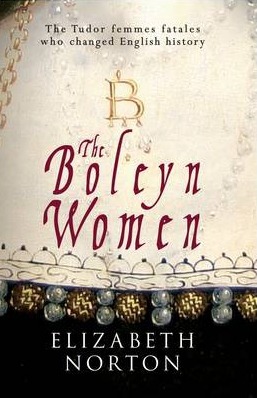 It is not often the women of a medieval family overshadow the men. The enigmatic Anne Boleyn continues to capture our imagination, but her family story is just as compelling. There was Anne Hoo Boleyn and Margaret Butler Boleyn who brought the family wealth and connections. There was Elizabeth Howard Boleyn who raised two daughters who would steal the heart of a king, Mary and Anne Boleyn. Their sister-in-law Jane Boleyn survived Anne’s fall but went to the scaffold with another one of Henry’s Queens, Catherine Howard. It was the daughters of Mary and Anne who lived on to see the Tudor dynasty reach its peak in the Golden Elizabethan Age.
It is not often the women of a medieval family overshadow the men. The enigmatic Anne Boleyn continues to capture our imagination, but her family story is just as compelling. There was Anne Hoo Boleyn and Margaret Butler Boleyn who brought the family wealth and connections. There was Elizabeth Howard Boleyn who raised two daughters who would steal the heart of a king, Mary and Anne Boleyn. Their sister-in-law Jane Boleyn survived Anne’s fall but went to the scaffold with another one of Henry’s Queens, Catherine Howard. It was the daughters of Mary and Anne who lived on to see the Tudor dynasty reach its peak in the Golden Elizabethan Age.
The Boleyn Women is the first book of its kind, an exhaustive and intricately researched account of eight generations of the women of the Boleyn family. Elizabeth Norton joined us to discuss her new book and the forebears of the greatest monarch of them all, the legendary Elizabeth I.
Your book looks at eight generations of Boleyn women. I found the earlier and more elusive members of the family fascinating, did you find a particular favourite among the women of the family?
I was very surprised about how much information survived from earlier generations of the family. The most vivid fifteenth century Boleyn woman has got to be Anne Hoo, the second wife of Sir Geoffrey Boleyn and the first known ‘Anne Boleyn’. She is my favourite (at least before Queen Anne Boleyn!). Before Anne Hoo, the Boleyn women survive as little more than names in documents or commemorated in church memorials. We only know that Geoffrey was married before because he mentions a first wife, Dionise, in his Will – nothing else is known of her.
Anne Hoo, on the other hand, was the daughter of a prominent gentleman and royal servant, Sir Thomas Hoo. He would later be ennobled as Lord Hoo and Hastings, bringing the Boleyns closer to the nobility. Even without this, Anne would be very important to the family. When Geoffrey died, the couple’s sons were minors and Anne was one of the people charged with managing his estates and wealth. She arranged marriages for her daughters (as well as personally warning off unsuitable young men!) and managed her own financial affairs. All in all, she was a strong and independent woman and it is clear to see that her great-granddaughter and namesake had much in common with her.
The Boleyn men seemed to have the habit, or good fortune, of marrying above their station. Which of the Boleyn wives do you think did the most to advance the family’s social standing?
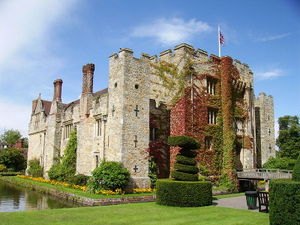
Margaret Butler, the wife of Sir William Boleyn, was certainly the most ambitious match made by a Boleyn man. At the time of her marriage in around 1475, she was the niece of the sixth Earl of Ormond. However, the Boleyns would certainly have had hopes that she would soon attain a higher status. In 1478 her unmarried and childless uncle died, with Margaret’s father, becoming the seventh Earl. He had only two daughters and, although he remarried between 1495 and 1496, failed to produce any further children that survived him. When he died in 1515 the then elderly Margaret and her sister were the heirs of a man described by one eighteenth century biographer as ‘the richest subject the king had’, who ‘left £40,000 in money besides jewels, and as much land to his two daughters in England, as at this day would yield £30,000 per annum’.
Although the inheritance was far from undisputed, the sisters succeeded in attaining control of the English manors quickly and Margaret’s son, Thomas, would later be granted the earldom of Ormond by the king, as well as also receiving the old Butler barony of Rochford, upgraded to a viscounty. Unlike her mother-in-law, Anne Hoo, who can be considered to have been a well-connected gentlewoman, Margaret Butler was a member of the nobility. Her status as an Earl’s daughter must have been instrumental in ensuring that her son, Sir Thomas Boleyn, found a welcome at court early in his career.
You illustrate that Grandmother Boleyn, Margaret Butler, and her son Thomas Boleyn seemed to be close. Margaret was a strong woman, do you think she influenced Thomas somewhat in regards to educating his daughters? Anne Boleyn received an unusually good education for a female in those times.
The Boleyn family was full of strong women. Anne Hoo took control of the family during her widowhood and was particularly close to her son, William, who was buried close to her. Similarly, Sir Thomas Boleyn was close to his mother, with Margaret writing a letter to him that passed conduct of her legal case concerning her inheritance over to him. In it, she confirmed that ‘I pray and heartily desire you that you will do for me in everything that you shall do for me after as you think best, I will, on my part, affirm and rate it in as like manner as though it were mine own deed’. Unfortunately no evidence of her education survives, although she was certainly present at Hever during some of her granddaughter’s formative years.
Arguably, Sir Thomas Boleyn’s wife, Elizabeth, may have been an even greater influence over her daughter’s education. Elizabeth was, in her youth, referred to as ‘sage’, with one of her half-sisters recalled for her learning. It may well have been she who helped arrange an unusual level of education for Anne.
Elizabeth Boleyn doesn’t usually get much of a mention in biographies of Anne or Mary Boleyn yet you have managed to track her presence at court on many occasions and show us that she had a significant role in her daughter’s lives. Why do you think Elizabeth is often overlooked?
At first glance, there is not a lot of information on Elizabeth. However, when you think about it, she was present at court for much of the time, with the sources suggesting that she played something of a political role during her daughter’s rise to power. I think Elizabeth is often overshadowed by the careers of her daughters. She was, however, a very important influence over her daughter, as can be seen in Anne’s own references to her mother.
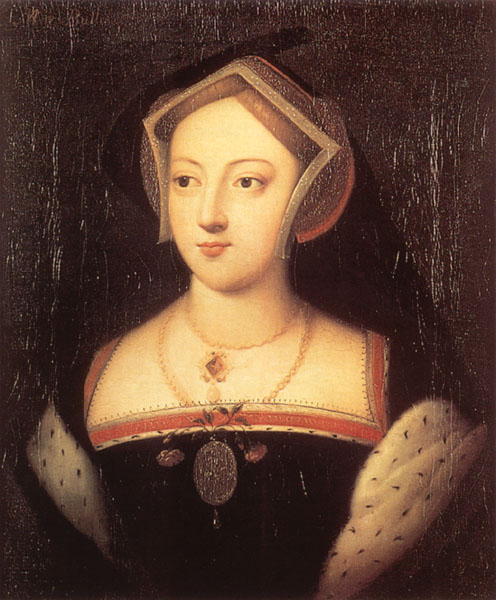
Mary Boleyn had a rather long relationship with Henry VIII. While it is often said this was to the great benefit of the family, unlike her sister, there was no chance for Mary to be anything other than Henry VIII’s mistress. How do you think Thomas and Elizabeth may have felt about the affair?
It’s difficult to be certain. They were definitely not happy about her secret marriage to the lowly William Stafford, with Mary writing to Cromwell to ask him to ‘pray my lord my father and my lady be so good to us, and to let me have their blessings and my husband heir good will; and I will never desire more of them. Also, I pray you, desire my lord of Norfolk and my lord my brother to be good to us. I dare not write to them, they are so cruel against us’.
A relationship with the king was obviously very different to a marriage to William Stafford. Henry was not particularly generous to his mistresses. Mary’s immediate predecessor, Bessie Blount, was married off to Gilbert Tailboys, who received a peerage. This was a match higher than Bessie could ordinarily have aspired to (her sisters married country gentlemen or merchants). However, provision for Bessie was made out of Tailboys family lands rather than any gift by the king. Similarly, Elizabeth Carew, who appears to have been an earlier mistress, received fine gifts of clothes but little else. Thomas and Elizabeth therefore cannot have expected any great rewards from the relationship. The peerage that he eventually received, that of Viscount Rochford, was his grandfather’s barony that had been upgraded – he had a good claim to that title anyway.
I suspect that Thomas and Elizabeth did not approve of the affair, but had little say in what happened. Elizabeth acted as chaperone for Anne when the king showed an interest in her, and George Wyatt also confirms that Anne was carefully brought up to be virtuous. I think they must have been worried about Mary!
The only thing that Mary Boleyn left behind was a letter to Thomas Cromwell yet is quite remarkable. How much insight do you think this gives us into Mary?
Mary’s letter is fantastic. It gives a great deal of insight into a woman who would otherwise be a shadowy figure. My favourite part is where Mary, who has, until that point, been fairly humble throughout, states that ‘if I were at my liberty and might choose, I ensure you, master secretary, for my little time, I have tried so much honesty to be in him, that I had rather beg my bread with him than be the greatest queen in Christendom’. This is clearly a dig at her sister, who was particularly displeased at the match, with Mary even asking that Henry speak to Anne on her behalf. I think the comment that the thought of never recovering Anne’s favour ‘is too heavy to bear’ is interesting. The letter, read in its entirety, suggests that the sisters had previously been close, but that there was also a rivalry between them – probably due to their relationships with Henry VIII.
The letter also shows Mary to be a romantic and, even after the marriage has brought about her ruin, she is still defiant. It demonstrates that Mary had as much spirit as her sister and the women of her family who had gone before her.

This is your fifth book featuring Anne Boleyn so you’ve spent quite a bit of time with her. If Anne had lived longer what sort of queen do you think would she have been?
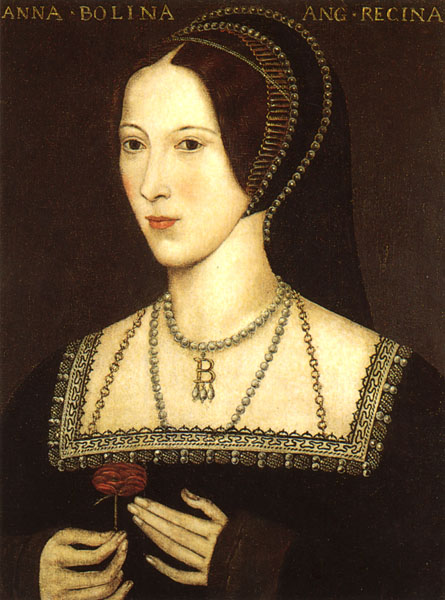
If she had lived longer, Anne would almost certainly be remembered as England’s first Protestant queen (a distinction which belongs to Catherine Parr). At the time of her death, the religious reform movement was heading towards Protestantism, but it was still in its infancy.
If she had survived, Anne would also have been regent for her minor children. Perhaps this would have been thirteen year old Elizabeth in January 1547, or a younger son? In her lifetime, Anne was very politically driven. I always think of her as a politician first and I think this would have continued – she would have been a competent and powerful regent.
Anne would probably have a better reputation if she had supplied the king with a male heir and survived him. By bearing a son and ensuring the succession, she would have provided the justification for all of Henry’s actions in his Great Matter and his repudiation of Catherine of Aragon. I suspect that she would have continued to make enemies during her time as queen though!
This is the first time I have read about the inventory taken of Jane Boleyn’s possessions after her death, and that she had been wearing black since George had been executed. She served three more of Henry VIII’s wives during the remainder of her life and he would have seen her fairly regularly. Although I have never given Henry VIII’s conscience much credit, do you think the steady presence of a ‘widow in black’ would have been a constant reminder of what he had done to her husband and sister-in-law?
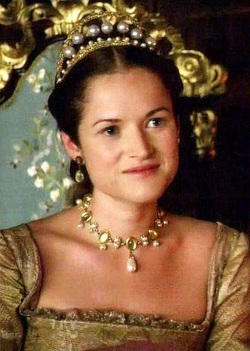
I was very struck when I began researching Jane that she wore black until the end of her life (having owned colourful clothes before George’s fall). She is also described as a ‘widow in black’ by William Cavendish, who would have seen her at court. To remain in mourning for more than five years, while much of that time was spent at court, would have been excessive even where the husband being commemorated had not died as a traitor; I am sure that her conspicuous presence must have been a reminder to Henry of what had occurred, although it was obviously not too blatant a reproach given that she was able to remain at court. He doesn’t seem to have been very fond of her, however, which may originally have been due to the fact that she had been George Boleyn’s wife – Henry went to extreme lengths to ensure that he could execute the ‘insane’ Jane in 1542.
Jane was very conflicted politically during her lifetime. Her father, Lord Morley, was friendly with Princess Mary, something which did place Jane in a difficult position during Anne’s time as queen. She was also on friendly terms with Mary and, arguably, could have secured a place in the princess’s household if she had chosen to. The fact that she decided to continue to serve Henry’s queens is interesting and suggests that she enjoyed living at court. Who knows, perhaps she was making a point to Henry about what he had done to her husband? She certainly cannot have been pleased with George’s death given that she continued to commemorate him.
Mary Boleyn’s daughter Catherine Carey started her career as a courtier at quite a young age but Mary seemed to have no interest in returning to court after her brother and sister were executed. Do you think she may have been concerned about having to send her daughter into a court like Henry VIII’s?
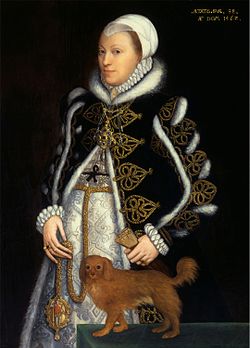
Court positions were fiercely sought after and were a route for girl’s to find a good husband. Mary Boleyn was quite socially unconventional, as her second marriage shows, and she does not appear to have been as ambitious as other members of her family. However, it would have been a very big step for her to completely disregard convention and refuse to send Catherine to court. Catherine was no heiress and needed to make a good match. I suspect that Mary was wary about her daughter attending Henry VIII’s court, given what had happened to her and to her sister, but she still supported the decision to place her there. Most girls did not come to harm at court. These are the ones that we never hear about, who spent a few years with the queen and then married well and retired to obscurity.
Although Elizabeth I was very young when her mother was executed I think we can see that it had a deep impact on her. Do you think her unstable childhood had something to do with the passionate attachments Elizabeth made with those who were close to her, like her Carey cousins and Robert Dudley?
Whether Elizabeth remembered Anne or not is debateable. At two and a half, she may have had a few memories. She certainly would have known, from a very early age, exactly what had happened to her mother. I agree that it had a deep impact on her, both emotionally and due to the fact that it coloured how others perceived her. Mary I reportedly claimed that Elizabeth resembled Mark Smeaton, while there were rumours at the time of Anne’s fall that Norris was her father. If someone besmirched Anne’s reputation, they also slandered Elizabeth: mother and daughter were bound together emotionally and politically until the end of Elizabeth’s life, as I think the fact of Elizabeth’s ring shows.
Given her highly unstable childhood, Elizabeth wanted a family and this had to be the Boleyns and Howards. Apart from her royal half-siblings and much older royal first cousins, Catherine and Henry Carey were her closest relatives and it’s not really surprising that she turned to them for emotional support and loved them. She had previously done something similar with Catherine Parr. Whether the same can be said of her relationship with Robert Dudley, I’m not so sure. I think she loved him, but in a romantic sense!
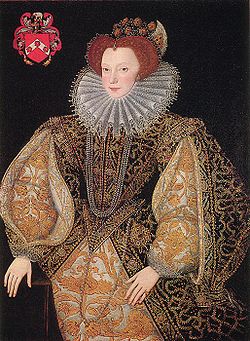
Catherine Carey’s daughter Lettice Knollys married Elizabeth’s great love, Robert Dudley, in secret. Elizabeth banished Lettice from court but not Dudley, even if she had not fully forgiven him. Why do you think she could never forgive Lettice?
Elizabeth felt that she had done a lot for Lettice. She gave her a place at court and favoured her family. She also considered her one of her kinswomen. She therefore felt that Lettice betrayed her by marrying Dudley. Which, in a way of course, she did. Dudley was easier to forgive because the queen loved him and, with Lettice away from court, she could pretend that his marriage had not happened. She took a similar approach when he was married to Amy Robsart earlier in the reign.
Your next book is on Anne and Mary Boleyn’s mother, Elizabeth Boleyn? Can you tell us a bit about it?
It’s at a very early stage at the moment, but I want to look at Elizabeth Boleyn’s generation – effectively the last group of women born in the medieval period. Using Elizabeth and other female members of her family, I will look at the role of the queen’s household in the early years of Henry VIII’s reign and how Anne Boleyn was able to rise from obscurity from within the household. Elizabeth is central to this and her story has never been told in full before.
With thanks to Amberley Publishing.
Elizabeth is a British historian, specialising in the queens of England and the Tudor period. She was awarded a double first in her undergraduate degree at Cambridge and has a Masters degree from Oxford. She is currently working part time towards a PhD in history at King’s College, London. The rest of the time, she writes books and articles about the Tudors, including biographies of four of Henry VIII’s wives.
Find out more at www.elizabethnorton.co.uk
Follow Elizabeth on Twitter @ENortonHistory
Elizabeth Norton on Facebook
 The Boleyn Women: The Tudor Femmes Fatals Who Changed English History Published by Amberley Publishing 2013
The Boleyn Women: The Tudor Femmes Fatals Who Changed English History Published by Amberley Publishing 2013
Buy The Boleyn Women: The Tudor Femmes Fatals Who Changed English History
The Boleyn family appeared from nowhere at the end of the fourteenth century, moving from peasant to princess in only a few generations. The women of the family brought about its advancement, beginning with the heiresses Alice Bracton Boleyn, Anne Hoo Boleyn and Margaret Butler Boleyn who brought wealth and aristocratic connections. Then there was Elizabeth Howard Boleyn, who was rumoured to have been the mistress of Henry VIII, along with her daughter Mary and niece Madge, who certainly were. Anne Boleyn became the king’s second wife and her aunts, Lady Boleyn and Lady Shelton, helped bring her to the block. The infamous Jane Boleyn, the last of her generation, betrayed her husband before dying on the scaffold with Queen Catherine Howard. The next generation was no less turbulent and Catherine Carey, the daughter of Mary Boleyn fled from England to avoid persecution under Mary Tudor. Her daughter, Lettice was locked in bitter rivalry with the greatest Boleyn lady of all, Elizabeth I, winning the battle for the affections of Robert Dudley but losing her position in society as a consequence. Finally, another Catherine Carey, the Countess of Nottingham, was so close to her cousin, the queen, that Elizabeth died of grief following her death. The Boleyn family was the most ambitious dynasty of the sixteenth century, rising dramatically to prominence in the early years of a century that would end with a Boleyn on the throne.




